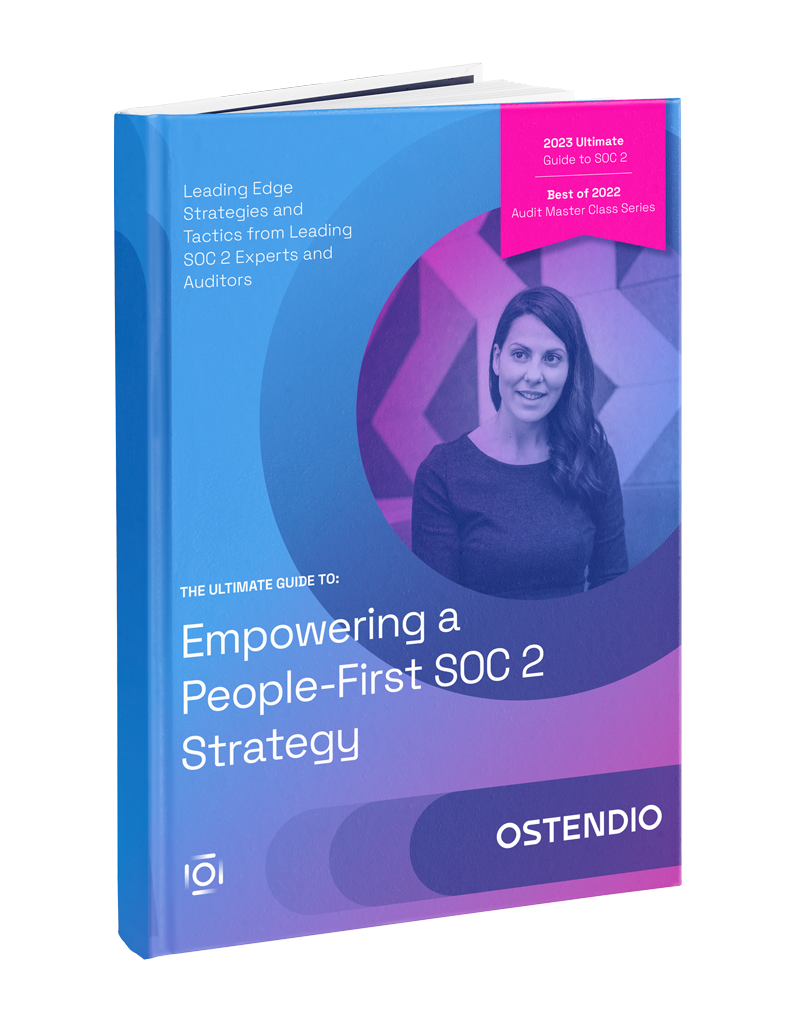
If you're a healthcare company, you know you need to be HIPAA or SOC 2 compliant.
But that doesn’t mean you know what to do.
Most advice is too generic.
“Buy a GRC tool,” or “download a HIPAA checklist,” or “hire a consultant.”
You likely have policies in a shared folder, a spreadsheet to manage things, a dashboard - and a growing suspicion that none of it is really going to satisfy what an auditor (or your customers) are looking for.
The problem isn’t your effort. It’s that no one told you how all the pieces are supposed to fit together.
Let’s break it down—and share some practical ways to fix it.
The 3 Most Common Failure Points in Healthcare Compliance Programs
1. Policies Are Treated Like Paperwork, Not Processes
Most teams upload policies. Few can prove they’re being followed.
Auditors don’t just want to see the “Acceptable Use Policy.” They want to know:
- Was it reviewed in the last year?
- Did all parties acknowledge it?
- Is it being followed and enforced?
Tactics you can use now:
- Add due dates and responsible owners to every key policy.
- Track acknowledgements using your HR or training system—or even a shared Google Sheet until you scale to a GRC platform.
2. Frameworks Are Treated Separately
We’ve seen it too often:
A team builds HIPAA documentation… then leadership says, “Now we need SOC 2,” and they start from scratch.
But HIPAA, SOC 2, NIST, and even HITRUST overlap more than you think.
Most controls (like access management, risk assessment, encryption) appear in every framework—they’re just worded differently.
Tactics you can use now:
- Create a spreadsheet with your HIPAA controls. Add columns for SOC 2 mapping.
- Use color-coding to track what’s already “reusable.”
- When your organization is ready for a GRC tool, you can use this spreadsheet as a checklist of criterion that matters most to your organization.
3. Compliance Is Treated Like a Project, Not a Program
It’s tempting to treat compliance like something you check off once a year. But real security and audit-readiness are ongoing.
Think of compliance like patient care—it needs consistent monitoring, not a one-time treatment.
Tactics you can use now:
→ Add a 30-minute compliance sync to your calendar once a month. Review:
- Policy updates
- Risk register
- Incidents
- Vendor reviews
It’s a small habit that creates massive clarity—and reduces audit panic.
What an Audit-Ready Compliance Program Looks Like
Organizations that stay audit-ready all year (without burning out) usually follow 4 key principles:
- Centralized – One system for policies, evidence, risks, vendors, training
- Repeatable – Clear cadence: monthly reviews, annual training, scheduled audits
- Cross-Referenced – Policies and controls mapped across HIPAA/SOC 2/NIST, etc.
- Audit-Proven – Evidence tied to policies + real-time task ownership
Pro Tip:
If your GRC platform doesn’t help you track ownership or versioning, you’re likely doing twice the work for half the value.
Quick Start Plan: What You Can Do This Week
If you’re just starting—or feel like your program’s a bit scattered—here are 5 things you can do right now to get more clarity:
- Identify your policies, assets, and controls
- Conduct risk and gap assessments
- Schedule regularly occurring activities
- Start tracking everything
- Ask yourself: Can we prove these policies are followed?
If you’re already using something like SharePoint, you can version-control docs and set policy review reminders without any new tools.
Want a Real-World Blueprint?
We’ve pulled together the real-world guide we wish every healthcare team had from day one:
The Healthcare Security & Compliance Playbook
- 6 hard-earned lessons from real healthcare orgs
- What successful teams do differently
- Self-assessment checklist: Are you actually audit-ready?
- 12-step plan you can start today
- GRC vendor comparison tool to help you evaluate platforms wisely
Explore the full playbook here:
https://www.ostendio.com/healthcare-security-compliance-ostendio
Final thought:
You don’t need a huge budget or a full-time compliance team to get this right.
You just need a structure—and a system that supports you.
Let’s make audit-readiness your default setting.

July 3, 2025

Comments